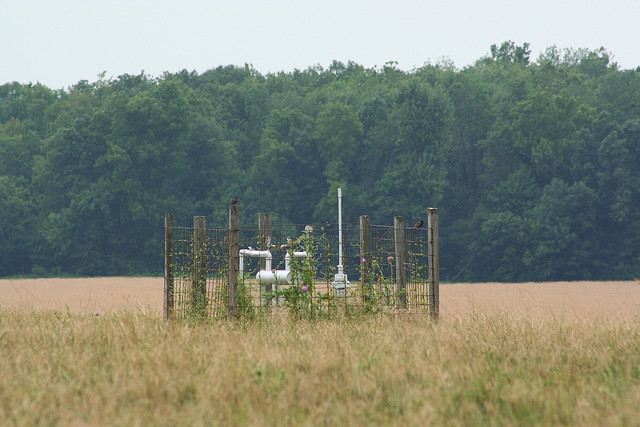
Natural gas pump. Image: juggernautco (Flickr)
By Jake Christie
From insect-based dog food to fusion energy, solutions to climate change vary wildly, but there’s one mundane solution that affects nearly everyone—building codes.
Michigan’s building codes are updated every six years, with the option to update them every three. Michigan’s Construction Code Commission last updated the state codes in 2015, meaning they’re currently working to establish new building codes.
Environmental groups in Michigan see this as an opportunity to tackle a relatively unaddressed driver of climate change.
“Building codes can have a big impact on it,” said Shanna Draheim, vice chair of the Michigan Construction Code Commission. “Our buildings are a huge chunk of our greenhouse gas emissions and energy use, estimates of 40% in some cases.”

This story is part of an occasional series called “Climate Solutions.”
The U.S. Department of Energy estimates that updating Michigan’s codes to match the International Energy Conservation Code guidelines could reduce greenhouse gas emissions by over 20 million metric tons over 30 years, the equivalent of the greenhouse gasses emitted by about 2.5 million homes.
Increasing energy efficiency in buildings requires new buildings to be built with efficiency in mind. This includes better windows and insulation to reduce temperature fluctuations, more energy efficient appliances and eventually eliminating a reliance on natural gas for heating and cooking, said Abby Wallace, a policy specialist with the Michigan Environmental Council.
Eliminating natural gas in homes is a big ask, Wallace admits. It is unlikely to be included in new building codes.
In 2015 natural gas heated 76% of Michigan homes, while only 10% were heated with electricity, according to the Michigan Office of Climate and Energy.
Switching from natural gas to electricity would affect more than the climate as gas stoves emit nitrogen dioxide, a chemical that can be especially harmful to young children, according to a report from the Rocky Mountain Institute.
Eliminating natural gas in buildings is essential to reducing greenhouse gas emissions, said Cheri Holman, executive director of the Green Building Chapter in West Michigan. While we can’t reduce the greenhouse gas emissions created by natural gas, we can create carbon-free electricity.
In addition to reducing emissions, more energy-efficient homes save homeowners money. While estimates from the Department of Energy’s report note that there would be increased up-front costs to constructing and buying new homes, consumers could see net-positive savings from reduced energy consumption in around five years.
States base their new codes off of general guidelines from the International Code Council and adjust them according to their needs, but the council doesn’t place a priority on energy efficiency, Wallace said.
One concern raised by builders is the lack of choice strict codes can entail for consumers. While codes were created to ensure public safety over time, building codes have been adopted as a means to implement other policies, such as sustainability and energy efficiency, according to the National Association of Home Builders.
While hard evidence supporting the efficacy of more stringent building codes is lacking, estimates from the federal government show the potential for building codes to be another tool against climate change.